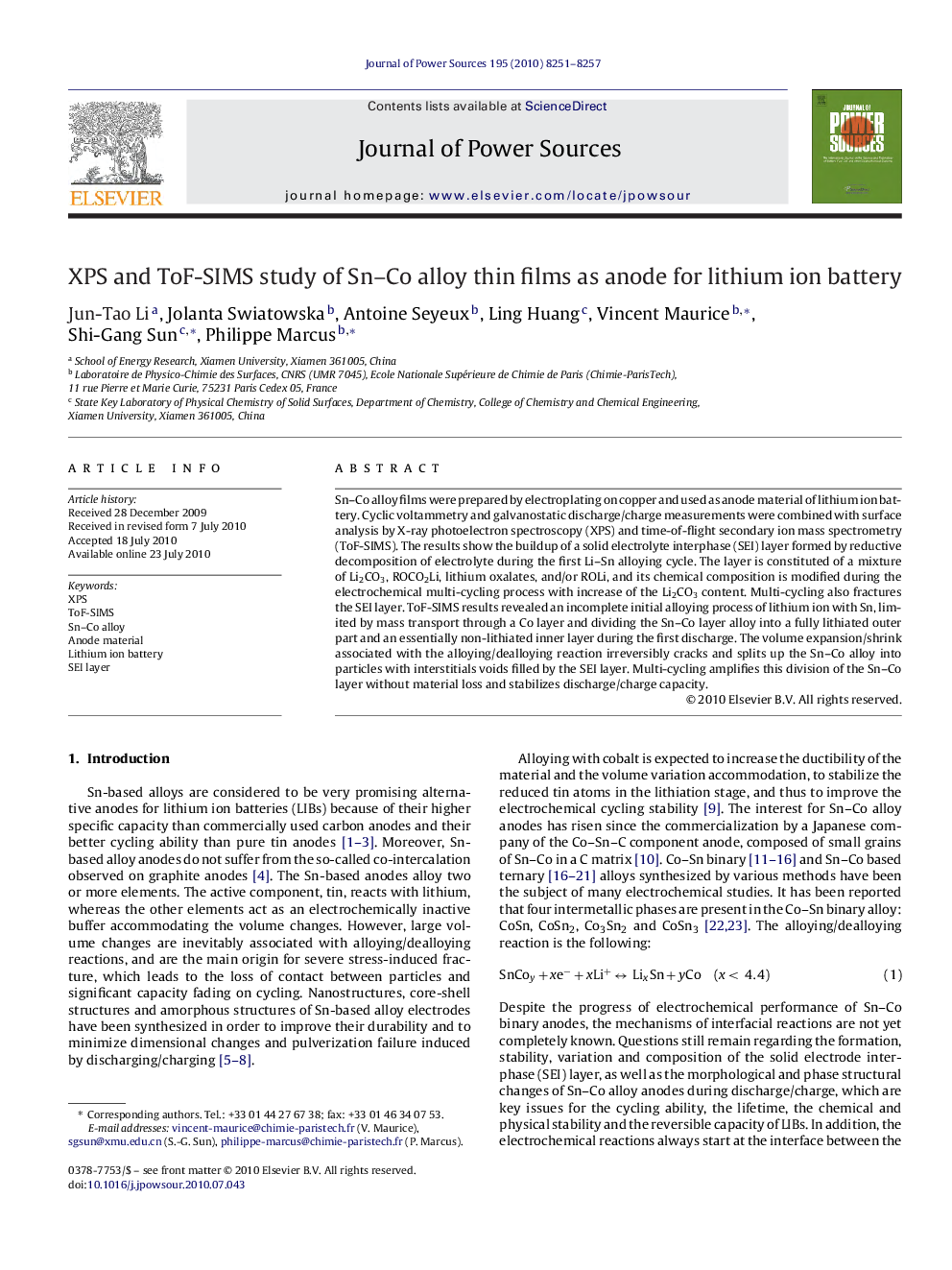| Article ID | Journal | Published Year | Pages | File Type |
|---|---|---|---|---|
| 1293681 | Journal of Power Sources | 2010 | 7 Pages |
Sn–Co alloy films were prepared by electroplating on copper and used as anode material of lithium ion battery. Cyclic voltammetry and galvanostatic discharge/charge measurements were combined with surface analysis by X-ray photoelectron spectroscopy (XPS) and time-of-flight secondary ion mass spectrometry (ToF-SIMS). The results show the buildup of a solid electrolyte interphase (SEI) layer formed by reductive decomposition of electrolyte during the first Li–Sn alloying cycle. The layer is constituted of a mixture of Li2CO3, ROCO2Li, lithium oxalates, and/or ROLi, and its chemical composition is modified during the electrochemical multi-cycling process with increase of the Li2CO3 content. Multi-cycling also fractures the SEI layer. ToF-SIMS results revealed an incomplete initial alloying process of lithium ion with Sn, limited by mass transport through a Co layer and dividing the Sn–Co layer alloy into a fully lithiated outer part and an essentially non-lithiated inner layer during the first discharge. The volume expansion/shrink associated with the alloying/dealloying reaction irreversibly cracks and splits up the Sn–Co alloy into particles with interstitials voids filled by the SEI layer. Multi-cycling amplifies this division of the Sn–Co layer without material loss and stabilizes discharge/charge capacity.
